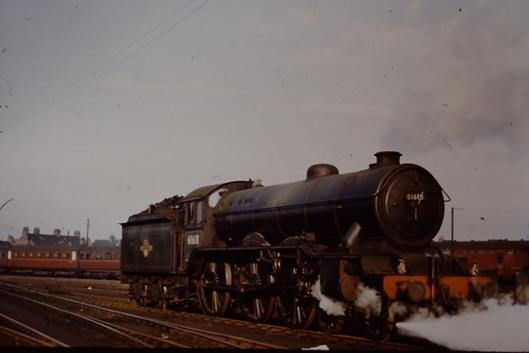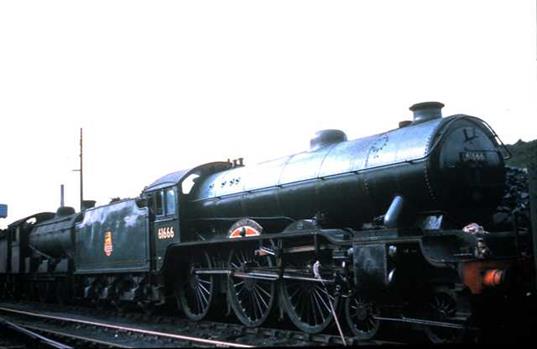Loco History
Originally a co-operative design between The London & North Eastern Railway and The North British Locomotive Company Glasgow in 1928. The initial batch of 10 locomotives were constructed and delivered to the LNER from Hyde Park Works, Springburn. LNER – Darlington Works continued construction (52) including design modifications and improvements from 1930 although the final batch (11) were produced by the local works of Robert Stephenson’s in Darlington.
Designed by Sir Nigel Gresley, the B17s were prevalent across the Great Eastern section of the former LNER network and later British Railways Eastern Region for over 30 years up to 1960. Mainline passenger operations saw them working London expresses associated with Liverpool Street, King’s Cross and Marylebone, whereas Boat Train duties linked the North with the port of Harwich.
Seventy three locomotives were constructed over a 9 year period from 1928 and all were named after stately homes and football clubs to be found anywhere within the boundaries of the former LNER network including parts of London. Design and initial construction was sub contracted to The North British Locomotive Company, by the LNER. The first of class was named SANDRINGHAM after the Royal Family’s residence in Norfolk and thereafter established the group name of the class as ‘Sandringhams.’ All B17’s were withdrawn from service and scrapped by the middle of 1960, therefore none were preserved. For life information on each individual locomotive refer to the table at the bottom of “SUMMARY OF CLASSES”” page.
 |
From new, the first 48 locomotives in the class were introduced with the small GE pattern tender to help meet certain stringent size and weight limitations, to comply with operating restrictions over the railway network of East Anglia. Names assigned to them represented the Stately Home theme except one which was named after a local County Regiment. As time passed more name changes occurred. During their service life many were modified with an improved boiler and tenders were exchanged. |
|
61618 WYNYARD PARK with GE pattern 3700 gallon tender Photo colour-rail.com |
| The final B17s to be built were the B17/4s intended for routes with few restrictions and were fitted with LNER 4200 gallon tenders. Many of these were named after football clubs and always held a special interest particularly amongst local communities associated with a football club of the same name. On many occasions local supporters were conveyed to the ‘away’ match by their namesake engine, which usually looked in pristine condition for the day’s outing. THE FOOTBALLERS’ nameplates are almost certainly unique in that many of them can still be observed on display at club grounds, either over the player’s tunnel to the pitch or the reception area or boardroom. |  |
|
61666 NOTTINGHAM FOREST with LNER pattern 4200 gallon tender Photo colour-rail.com
|
For additional history, Click Here
The following section shows technical details of the B17 class and a typical allocation
The following section shows details of a typical B17.
